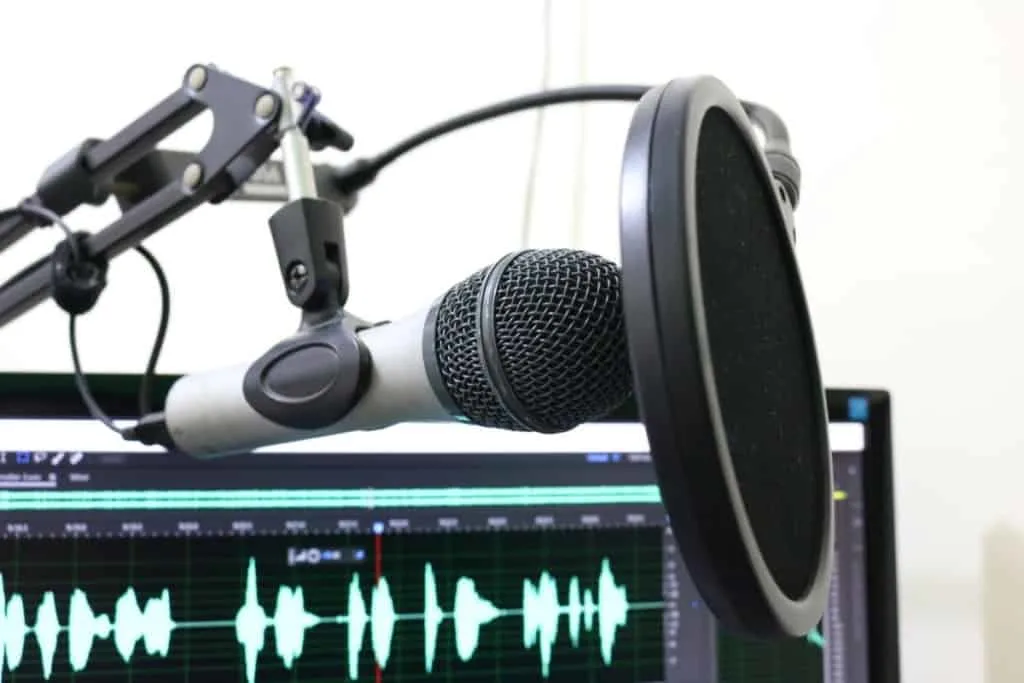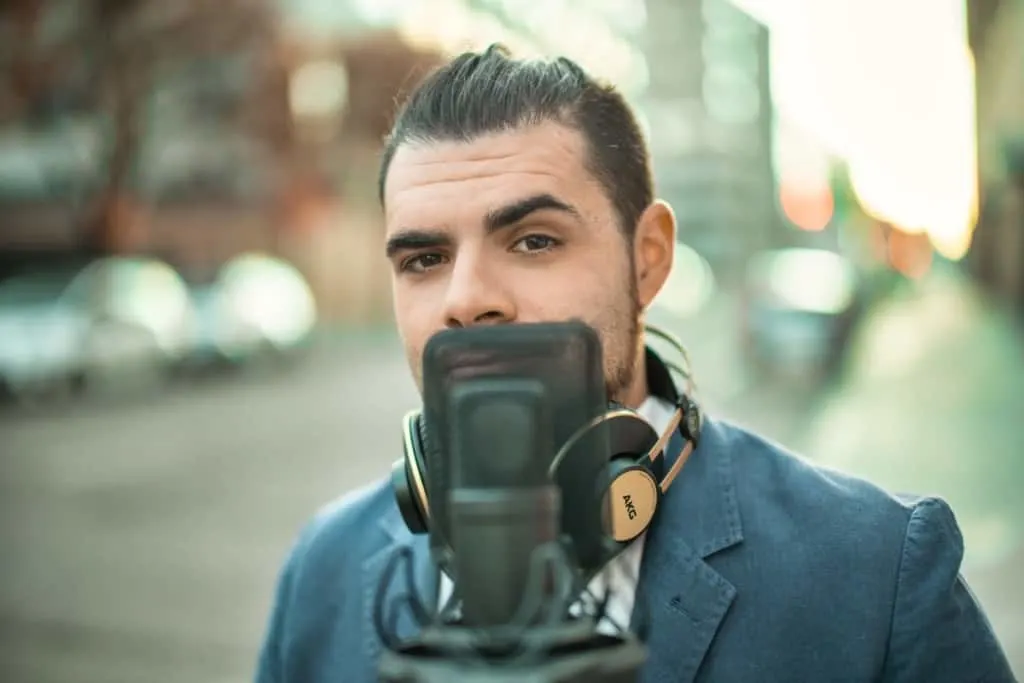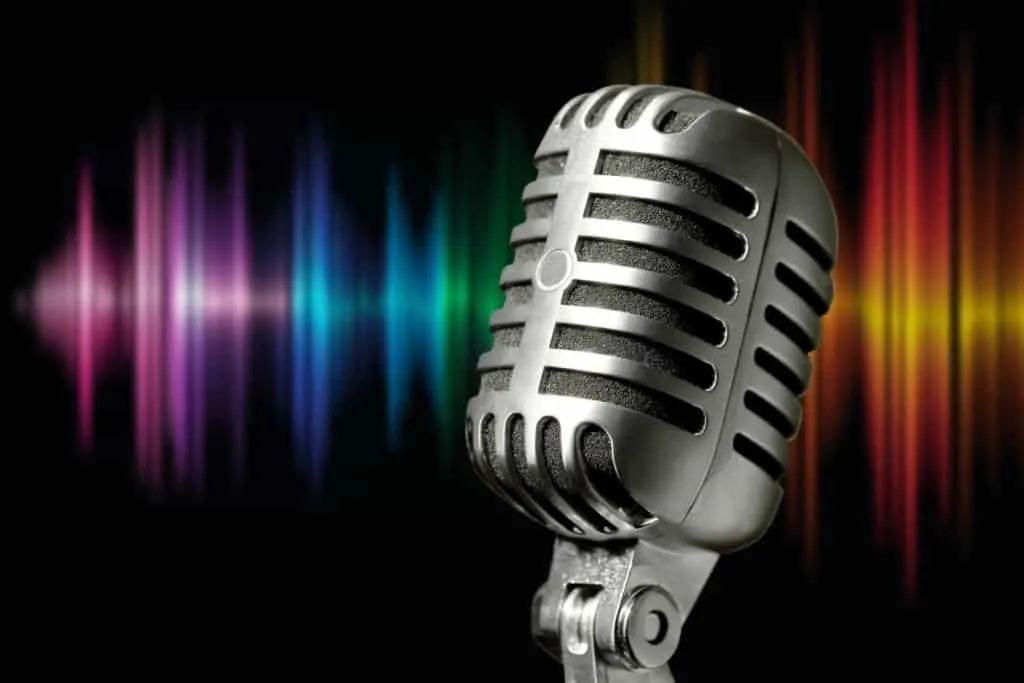Are you taking your first steps in podcasting? There’s an entire world waiting to be discovered!
Believe me, I’ve been there, asking myself “where do I start?” There’s so much to cover and the options just seem endless. Fear not and worry not because you are in the right place. After doing countless podcasting sessions for myself and others, I’m here to shed some light on the darkness and discuss everything you need to know about podcasting, and in particular the best microphone for the job.
So, should you use a dynamic or condenser microphone for podcasting?
As a general rule, you should use a dynamic microphone for podcasting because you can get amazing results with fewer problems occurring. Condenser microphones can be used for podcasting but are more difficult to set up and can often pick up unwanted external noises.
In fact, companies releasing “podcasting microphones” are issuing dynamic microphones almost exclusively.
You can also get great podcasting sessions working with condenser microphones, but these are more fragile and sensitive and you have to know a little bit more about audio to avoid any problems. so, for those about to start, I recommend going for a dynamic microphone when podcasting; those who have been working with audio for some time can choose either to have more fun.
That was a short answer to a long question. Do you want to know the rest of it? Dive in and let’s go through all the important aspects of the long answer. In this article, I’ll teach you how to get started and get that pro sound you are looking to achieve.

Dynamic Vs Condensers When Podcasting
I didn’t set out to write yet another piece on dynamic vs condensers because you might have read hundreds of those already.
What we are going to try and do here is to reach a higher level of understanding of why one kind of microphone or the other is better for podcasting in your particular case scenario. This way, you can take this post as an applied-knowledge basics guide to pick a microphone and buy it to start podcasting today.
Gain And Power
This is, perhaps the first thing you’ll notice as a big difference between dynamics and condenser microphones. Condenser microphones are always more powerful and have a higher gain than their dynamic counterparts. This is not to say that one is more capable than the other, it is more like a structural difference; they are built very differently.
This can be a pro and a con depending on the situation. Sometimes having less gain on the microphone translates into a higher overall noise-level. Furthermore, depending on where you are plugging your dynamic microphone, the results will be very different. If you are trying to compensate for the microphone’s low gain cranking your interface, then you might get that noise floor from the interface’s preamp.
On the other hand, cranking a good preamp can color your voice beautifully. Bear this in mind because it is very difficult to remove that noise in post-production. The good news is that you can increase the gain in your own voice by coming closer to a dynamic microphone. By doing that you’ll get that velvet, classy, and sexy tone with the proximity effect (more on that later).
Sibilance And High Frequencies
In case you are not familiar with sibilance and high-frequency noises, they are high-pitch notes that are natural to the human way of speaking. Whenever you create the sounds composing an S, you get this snake-like sound going straight into the microphone.
For example, every time you see the quintessential podcasting and radio broadcasting microphone of the day, the Shure SM7B, you’ll notice it has a windshield or foam pop filter in front of it. The windshield is important to deflect plosives and take away some of that annoying top end. (You will have seen this microphone used in many podcasting setups)
Check out the popular Shure SM7B Podcasting Microphone here on Amazon.
On the other hand, another great microphone, the Rode NT-1 which is a large-diaphragm condenser microphone, needs a pop filter to stand in front of it. Trying to do a vocal take with no pop filter within speaking range to a large-diaphragm condenser is as close to an unusable take as you’ll get.
There are a plethora of options in the market to choose from. Just pick the one you like the most, but never use a large-diaphragm condenser within speaking distance without a pop filter. Yes, you can write down that golden rule for podcasters.
I have written an article on pop filters. You can read it here.

Noise Pickup When Podcasting
This is an issue that is very common on condenser microphones. They have more gain and thus pick up more noise around them. We are going to address microphone patterns in a couple of paragraphs, but it is important to understand that if you plan to record in a noisy environment, you have to avoid the microphone picking up that noise.
There are plenty of ways to reduce noise pickup from the microphone; let’s take a look at the most common two:
· Record at night – This is a trick I learned from my friends and clients who do ASMR videos and need extreme quietness. Try to do your recordings with a condenser microphone at a time of the night in which you´ll hear no outside or inside noise.
· Get a dynamic microphone – Another way to avoid your microphone picking up outside noises is to simply get a dynamic microphone. You might not have the budget to get started on an SM7B, but a much cheaper Shure SM58 will do the trick too. Dynamic microphones are highly directional; they don’t pick up anything but what’s in front of them.
Take a look at this video that reviews, and also shows you how to set up the popular Shure SM7B Podcasting microphone.
Check out this microphone here on Amazon.
Polar Patterns For Different Podcasting Scenarios
Speaking about directional and non-directional microphones, it is time to talk about polar patterns. You might have seen the drawings expressing “Figure of 8” or “Omnidirectional”.
These polar patterns explain the way that the microphone picks up sounds. For example, a “figure of 8” microphone works on opposing sides. This is to say that if you are doing an interview in a quiet room, you can simply place it in the middle and let it capture both voices in perfect balance.
Another example could be omnidirectional, which are microphones (like the AKG P420) used for capturing the whole room in 360 degrees. Let’s say you have multiple guests and no mixing console; just put an omnidirectional mic in the middle of a (quiet) room and let it record all the interaction. Most microphones capable of “figure of 8” are also “omnidirectional” at the flick of a switch.
Dynamic microphones don’t have a polar pattern thus they are the most linear on the market; they will capture only your voice if you speak in front of it. If you want an in-depth explanation of polar patterns, you can check this https://www.neumann.com/homestudio/en/cardioid-omni-figure-8-why-do-microphones-have-different-pickup-patterns great post by German microphone giants Neumann.
Here’s a great video that explains microphone polar patterns. This is important to understand, particularly for podcasting.
Phantom Power And Podcasting Microphones
This is a topic as widely covered in journalism as it gets.
Dynamic microphones do not need or can be damaged by phantom power. On the other hand, condensers require phantom for them to function. As the capsule in condenser microphones generates such a small amount of gain due to its construction, it needs extra voltage to lift signal gain and make it audible for humans. Dynamic microphones do not need that extra push to work and since the design is internally grounded, they are not hurt by the 48 volts (phantom power) of electric current going through the cable.
You can read my full article on phantom power and microphone set up here.
Proximity Effect When Podcasting
Last but definitely not least, the closeness effect you can get on a dynamic microphone is very difficult to achieve on a condenser microphone. How so? Very simple; there is no way you can get as close to a condenser microphone as you can on a dynamic, furthermore, if it has a windshield on it, you can almost “eat it”.
- Much of that beautiful low end that you hear from established podcasters that make you feel closer to the person speaking, comes from this proximity or closeness effect.
So, Can you achieve this with a condenser microphone? Yes, the condenser has a natural low-end curve that will grant you some of those frequencies, but in a rounder, more musical way taking away the coziness of the proximity effect.

Studio Podcasting
Most of us podcasters also run a studio. In my case, for example, I got into podcasting because of a friend, but my main work has always been as a studio engineer.
In fact, I’ve done tons of podcasting work in the studio itself. It is kind of funny because I have this foldable, garden-ready, plastic white table that we cover with a cool cloth and that’s where the magic happens surrounded by state-of-the-art equipment but on a plastic garden table.
If you buy a good microphone such as a large-diaphragm condenser, you can then use it a lot to record vocals and do other kinds of productions.
The extra gain gives condenser microphones the ability to capture more of the texture of human voice at a different level. There are more lows and more mid-range in the mix as well as top-end sibilance. So, although you have to be more careful, as it’s a sensitive microphone, buying the aforementioned Rode NT1 can be a great step forward in your studio work as well.
Investing money on a dynamic podcasting microphone can also be a great studio purchase, but you’ll have to get amazing preamps and work a little more in post-production to get the same level of detail as you would on a condenser. That being said, here you have production legend Chris Kimsey talking about why he loves the SM7B, a dynamic microphone in the studio.
Dynamic Vs Condenser Podcasting Conclusion
Taking your first steps into any new endeavor involves a lot of trial and error. I have been recording sounds for the past 25+ years and still learn a lot every time I do it. Podcasting is a marvelous world full of beautiful people and amazing challenges. The first part is sounding great and any of the microphones named in this article can help you.
Finally, if you decide to go for a condenser microphone and don’t want to spend some extra on an interface, you can get the Rode NT-USB and get started on a single cable. There are absolutely no excuses not to start today.
Check out my article on USB microphones here.
Don’t forget to have fun and happy podcasting!
